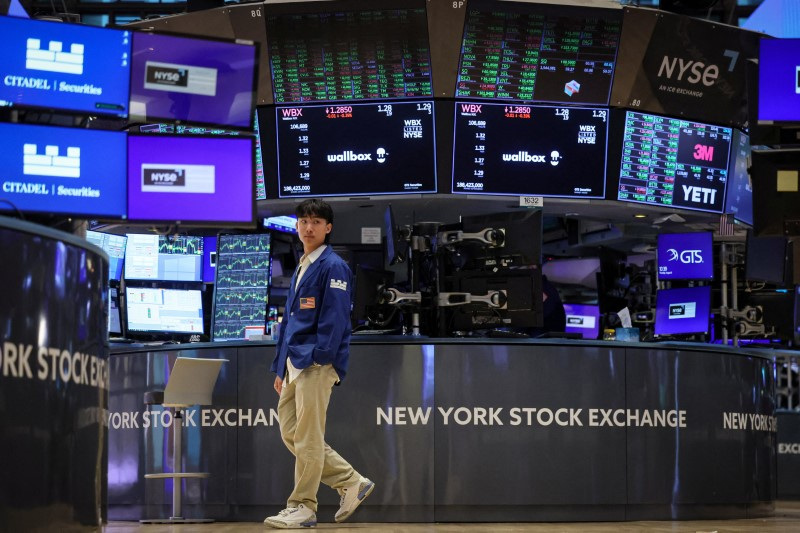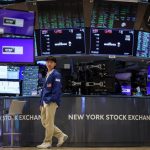LONDON (Reuters) – Systematic trading strategies including those run by hedge funds continue to dump trades, adding to about $109 billion of global equity futures sold in the past month, Goldman Sachs strategist Scott Rubner said in a note seen by Reuters on Tuesday.
Selling will likely continue into the autumn, and the second half of September might prove “a tricky trading environment,” said the note, which was released on Monday.
A systematic trading strategy uses strict rules rather than a speculator’s gut feeling, and sometimes includes coding and algorithms, to guide trading and investment decisions.
August kicked off with a meltdown in world equity markets that started after investor positioning in the yen and other currencies was wrong-footed by a Bank of Japan interest rate hike and weaker-than-expected U.S. jobs data.
Rubner said one factor that drove the meltdown was systematic trading programs used by so-called “commodity trading advisors” (CTA) that ride market trends, but when certain risk thresholds are reached, require the trading programme to ditch the position.
“Systematic rules-based deleveraging from CTA strategies remain the most important impact in the market period…We just witnessed one of the largest and fastest unwinds that I have seen,” said Rubner, a tactical strategist for Goldman.
LEVERAGE AT A PEAK
Leverage used by hedge funds to increase the size of trades is at a record high for the last decade, according to data provided by the Office of Financial Research’s Hedge Fund Monitor.
Its data shows that U.S.-registered hedge funds ended March with $2.3 trillion in borrowing from prime brokers, up roughly 63% from December 2019 and outpacing their assets’ growth.
Traders dropped the bulk of stock futures over the past week, totaling around $80 billion, after Monday’s brutal stock selloff triggered by the unwinding of billions of dollars’ worth of leveraged trades, the Goldman note said.
Wall Street’s favoured market fear gauge, the CBOE Volatility Index, closed at its highest in nearly four years on Aug. 5.
In the last three weeks, top book liquidity in benchmark S&P 500 stocks, the number of trades visibly on offer to buy and sell, has fallen 80%, data from the note showed. This number, indicating how easy it would be to purchase or leave stock trades, has sunk to $5 million currently, from $26 million in July, it said.
Options bets against volatility or wagers that stock markets would stay calm have also continued to unwind, said the note.

Pension funds seasonally rebalance in September and this time, they’ll “further sell” equity exposure, it added.
Given pensions’ increased funded status, or the balance between what they owe to savers and the value of their investment assets, Rubner reckoned these investors, some of the biggest in the world, would take advantage of lower bond yields and drop stocks in favour of fixed income.
To read the full article, Click Here

